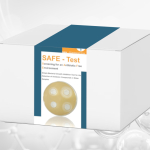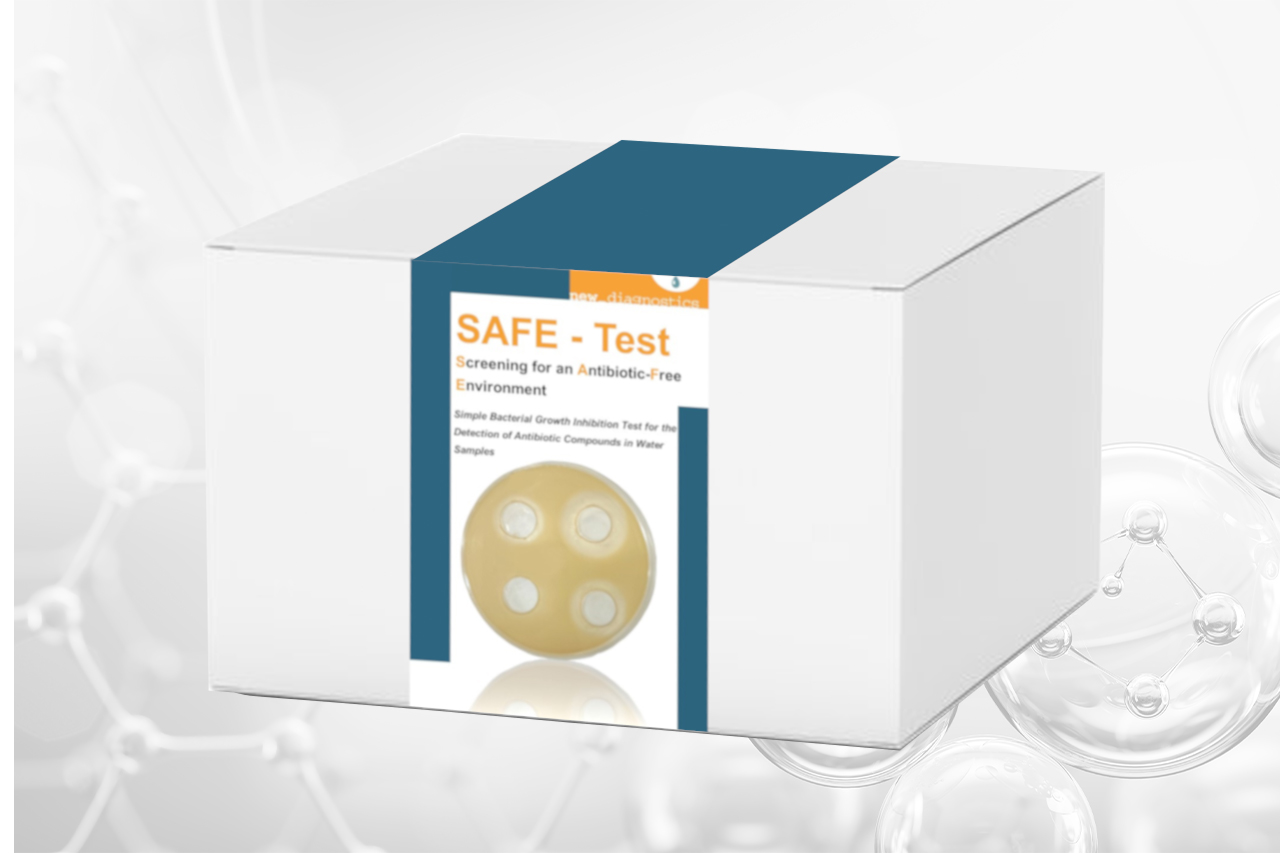SAFE-Test
Screening for an Antibiotic-Free Environment
Detection of various antibiotic contaminants in water
* Pikkemaat Mariël G., et. al (2008); A new microbial screening method for the detection of antimicrobial residues in slaughter animals: The Nouws antibiotic test (NAT-screening); Food Control 19, 781-789
Key Characteristics
The SAFE-Test uses different bacteria that are sensitive to different antibiotic groups. By using the test, a possible contamination of water samples with aminoglycosides, tetracyclins, quinolones etc. can be detected.
Biohazard
All included test bacteria belong to the risk group 1 according to German TRBA 466 classifications of procaryotes (bacteria and archaea). The bacteria pose no risk to the human health and the environment.
Validation
The SAFE-Test has been prevalidated in a short in-house study to demonstrate its applicability.
Support
Will this test fits to my purposes? We give sufficient support for choosing the right test for your application as well as before and during test establishment.
Test Principle
The test based on the principle of inhibiting bacterial growth by the diffusion of possible antibiotics in selective agar plates containing viable bacteria. For different antibiotic groups, different bacteria are used which are susceptible for the different antibiotic groups. A special test agar composition promotes the inhibitory effect on the bacteria.
Test Organisms
Bacillus subtilis (aminoglycosides, tetracyclines), Escherichia coli (quinolones) and Kocuria rhizophila (macrolides, β-lactame).
Mode of Action
Depending on the present group of antibiotics in the sample the growth of the susceptible bacteria is inhibited e.g., by inhibiting cell wall biosynthesis (β-lactame), inhibition of protein synthesis (tetracyclines, macrolides) or inhibiting special enzymes (quinolones).
Detection
Detection of inhibition zones is performed visual. The diameter of identifiable inhibition zones can be determined with a ruler or caliper.



